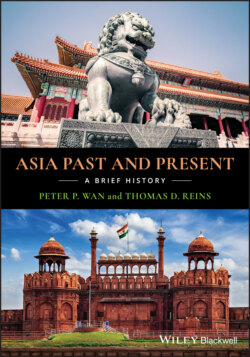Читать книгу Asia Past and Present - Peter P. Wan - Страница 81
Foreign Invasions of Korea
ОглавлениеKorea’s geopolitical location has subjected it to repeated invasions by its larger and stronger neighbors: the Chinese, the Japanese, the Mongols, the Manchus, and later the Western powers. It has responded by putting up heroic and sometimes successful resistance. Sui China launched a series of attacks against it (598–), which, successfully rebuffed by the Koreans, contributed to the Sui’s quick demise. Japanese warlord Toyotomi Hideyoshi led two invasions of Korea (1592 and 1598, respectively). The Koreans destroyed his navy in sea battles with their ingenious “turtle ships,” and eventually successfully repelled the Japanese invasion with help from Ming China. But the fighting had taken a huge toll on Korean life and fortune. And the Manchus took advantage of Korea’s weakness to invade (1627 and 1636), eventually turning it into a tributary state. For the next three centuries, the Manchus ruled over China directly and saw Korea as a protectorate.
The turtle ship is a large warship whose deck is fully protected by a shield called a “turtle shell.” The shield, perhaps of iron, can deflect cannon fire, and it is studded with iron spikes to deter enemies from boarding. It has a metal prow, mounted with a dragon head that can fire a cannon, emit poisonous smoke, or release a smokescreen to hide its movement in combat. It is powered by rowers underdeck. It can ram and sink almost any ship. It was used intermittently from the fifteenth to the nineteenth centuries.
By the late nineteenth century, Tsarist Russia built the Trans‐Siberian Railway that took Moscow eastward to the Pacific Ocean. This presented a threat to numerous nations, including China, Korea, Great Britain, and particularly Japan. Should Russia take control of Korea, it would place Moscow less than 200 miles from Japan. Eventually Japan went to war with China in 1894 in order to replace Beijing as the protector of Korea, and with Russia in 1904 to keep Moscow out of Korea. The Hermit Kingdom became an unwilling pawn in another “great game” in Asia.
Map of the Trans‐Manchurian Railroad. BAM: Baikal–Amur Mainline. Transsib: Trans‐Siberian Railway.
Source: Wikimedia User Vmenkov, https://commons.wikimedia.org/wiki/File:Chinese_Eastern_Railway‐en.svg.
